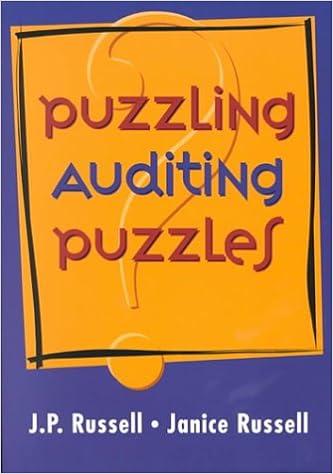


D-2 Appendix D Propiedades Estates and Trusts Tideicomisor If taxable income is over: But not over: The tax is: $ 0 $ 2,600 $ 2,600 $ 9,300 $ 9,300 $12,750 10% of taxable income $260 plus 24% of the excess over $2,600 $1,868 plus 35% of the excess over $9.300 $3,075.50 plus 37% of the excess over $12,750 $12,750 Tax Rates for Net Capital Gains and Qualified Dividends Rate Taxable income Married Filing Jointly Head of Household Trusts and Estates Single 0% 15% 20% $0 - $78,750 $78,751 - $488,850 $488,851+ Married Filing Separately $0 - $39.375 $39,376 - $244,425 $244.426+ $0-$39,375 $39.376 - $434,550 $434,551+ $0 - $52,750 $52,751 - $461,700 $461,701+ $0-$2,650 $2,651 - $12.950 $12.951+ *This rate applies to the net capital gains and qualified dividends that fall within the range of taxable income specified in the table (net capital gains and qualified divi- dends are included in taxable income last for this purpose). Basic Standard Deduction Amounts Amount of Each Additional Standard Deduction for Taxpayers Who Are Age 65 or Blind 2018 2019 Amount Amount Married taxpayers $1,300 $1,300 Single taxpayer or head of household $1,600 $1,650 2018 2019 Filing Status Amount Amount Married Filing Jointly $24,000 $24.400 Qualifying Widow or Widower $24,000 $24.400 Married Filing Separately $12.000 $12.200 Head of Household $18,000 $18,350 Single $12.000 $12.200 *For individuals claimed as a dependent on another return, the 2019 standard deduction is the greater of (1) $1,100 or (2) $350 plus earned income not to exceed the standard deduction amount of those who are not dependents. Exemption Amount 2018 2019 $4.150 $4,200* *Used for qualifying relative gross income test. Corporations Rate Taxable income All 21% INCOME ORDINARY Appendix D Tax Rates 2019 Tax Rate Schedules Individuals Schedule X-Single Schedule Z-Head of Household If taxable income is over: But not over: The tax is: $ 0 $ 13,850 $ 52,850 If taxable income is But not over: over: The tax is: $ 0 $ 9,700 10% of taxable income $ 9,700 $ 39,475 $970 plus 12% of the excess over $9.700 $ 39,475 $ 84,200 $4,543 plus 22% of the excess over $39,475 $ 84,200 $160,725 $14,382.50 plus 24% of the excess over $84.200 $160,725 $204,100 $32,748.50 plus 32% of the excess over $160,725 $204,100 $510,300 $46,628.50 plus 35% of the excess over $204,100 $510,300 $153,798.50 plus 37% of the excess over $510,300 $ 84,200 $ 13,850 10% of taxable income $ 52,850 $1,385 plus 12% of the excess over $13,850 $ 84,200 $6,065 plus 22% of the excess over S52.850 22,000 $160,700 $12,962 plus 24% of the excess over $84.200 over son.. $204,100 $31,322 plus 32% of the excess over $160,700 w $510,300 $45,210 plus 35% of the excess over $204,100 $152,380 plus 37% of the excess over $510,300 $160,700 $204,100 $510,300 Schedule Y-2-Married Filing Separately Schedule Y-1-Married Filing Jointly or Qualifying Widow(er) If taxable income is over: But not over: The tax is: If taxable income is over: But not over: The tax is: $ 0 $ 9,700 $ 0 $ 19,400 $ 39,475 $ 78,950 $ 84,200 $ 9,700 10% of taxable income $ 39,475 $970 plus 12% of the excess over $9,700 $ 84,200 $4,543 plus 22% of the excess over $39,475 $160,725 $14,382.50 plus 24% of the excess over $84.200 $204,100 $32,748.50 plus 32% of the excess over $160,725 $306,175 $46,628.50 plus 35% of the excess over $204.100 $82,354.75 plus 37% of the excess over $306,175 $ 19,400 10% of taxable income $ 78,950 $1,940 plus 12% of the excess over $19,400 $168,400 $9,086 plus 22% of the excess over $78,950 $321,450 $28,765 plus 24% of the excess over $168,400 $408,200 $65,497 plus 32% of the excess over $321,450 $612,350 $93.257 plus 35% of the excess over $408,200 $164,709.50 plus 37% of the excess over $612.350 $168,400 $160,725 $321,450 $204,100 $408.200 $306,175 $612,350 Return Next 4 1 1 point In a previous year, Taxpayer purchased on the secondary market a corporate bond with a ten-year term at and a maturity value of $50,000. She paid $55,000 for the bond, which paid interest this year at a stated rate of 3-percent for cash interest payments of $1,500 per year. The amount of bond premium amortization attributable to this tax year is $500. Select the most accurate statement. Taxpayer must include in income only the $1,500 in interest payments she received this year and must disregard the amortization O Taxpayer must include in income $1,500 of interest payments she received this year plus $5,000 in bond premium amortization Taxpayer must include in income $1,500 of interest payments she received this year plus $500 of bond discount amortization attributable to this year for a total of $2.000 in taxable income 2. 3 O Taxpayer must include in income $1,500 of interest she payments received this year but may elect to reduce that amount by $500 of bond premium amortization attributable to this year 4 Previous Next 5 6 12:30 PM 00 6/24/2020 7 Search here i 8 6 5 Y R. T









